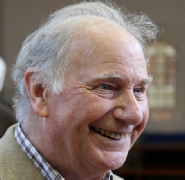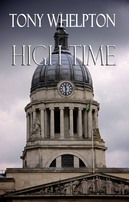 Visit my Facebook page
Visit my Facebook page
The Literary Lounge
High Time

High Time is essentially a story of the problems faced by a mixed-
London 1968: Eight-
Flashback to Nottingham 1958: Row between Susan (then 19) and her parents over her going out with a young Jamaican, especially after a fight in which Courtney is attacked and injured (the start of the so-
Life is a struggle for a few years, partly through lack of money but principally because he is black, she is white, and their daughter is neither. Ruth constantly returns to the question of grandparents, but is always fobbed off; Susan and Courtney are tormented by the matter, but separately: they never talk about it.
For the broken family chain to be repaired, and the multi-
What happened to A Happy Christmas?
In 2016 I published two books, There’s No Pride in Prejudice and A Happy Christmas. It was a bit of an experiment on my part, to see if it was really possible to work on two books at one time, my theory being that when I encountered difficulties with one of them (as always happens with any author from time to time), I would be able to switch to working on the other, then switch back again, by which time my subconscious mind would have quietly sorted out the problems.
The theory seemed fine, but did it work? Not really. What happened in practice was that one, There’s No Pride in Prejudice, took precedence and was finished by the summer, and then I found myself obliged to concentrate on marketing and promoting that book, which is always a time-
I resolved none the less to stick to my original plan of publishing A Happy Christmas in the same year, but it should have been obvious to me that it would fall a long way short of the target length of 80,000 words which I always aim at for my novels. So, instead of postponing publication until the following year, I settled for describing it as a novella and publish the 35,000 words I had already written; I had already started work – mentally, at least – on my next novel, A Change of Mind, and I allowed that to distract my judgment.
I soon came to realise that the theme of A Happy Christmas was worthy of rather more serious treatment than I had accorded to it. The more I looked at it and thought about it, the more I realised that there were characters and themes which should really have been properly developed; in particular, the two main characters, Susan and Courtney, had disappeared from view, and the central theme of the novel, the problems of mixed race relationships had vanished with them.
Consequently, as soon as A Change of Mind had been successfully launched at the October 2017 Cheltenham Literature Festival, I started to look again at A Happy Christmas. Initially I considered the possibility of leaving it unchanged and making the ‘back story’ into a completely independent entity; I was influenced by Philip Pullman’s description of one of his works, not as a sequel (because the events did not happen later), nor as a prequel (because the events did not happen before either), but as an ‘equal’. But, despite spending many weeks trying to work out the means of making it work, I eventually accepted defeat and decided to write the novel which I should have written in the first place, and so High Time was conceived – it really was high time that I sat down and wrote the novel which had been in my mind in the first place!
Once I had made this decision, I found that progress was relatively straightforward, because, in writing A Happy Christmas, I had mentally sketched out what was happening to those characters who had disappeared from view, and I eventually found the end result very pleasing, and I hope my readers will feel the same way.
Apart from the fact that High Time is well over double the length of A Happy Christmas, the whole story hangs together much more coherently, and it has been possible to develop the serious themes of the book without losing any of the joy and happiness which were present in the earlier version, which is no longer available to buy.
I hope you all agree – I think that the final outcome actually surpasses Billy’s War!
High Time is currently available from the Amazon Kindle Store as an e-
It will shortly also be available as a paperback. The ISBN will be 9781788764469.